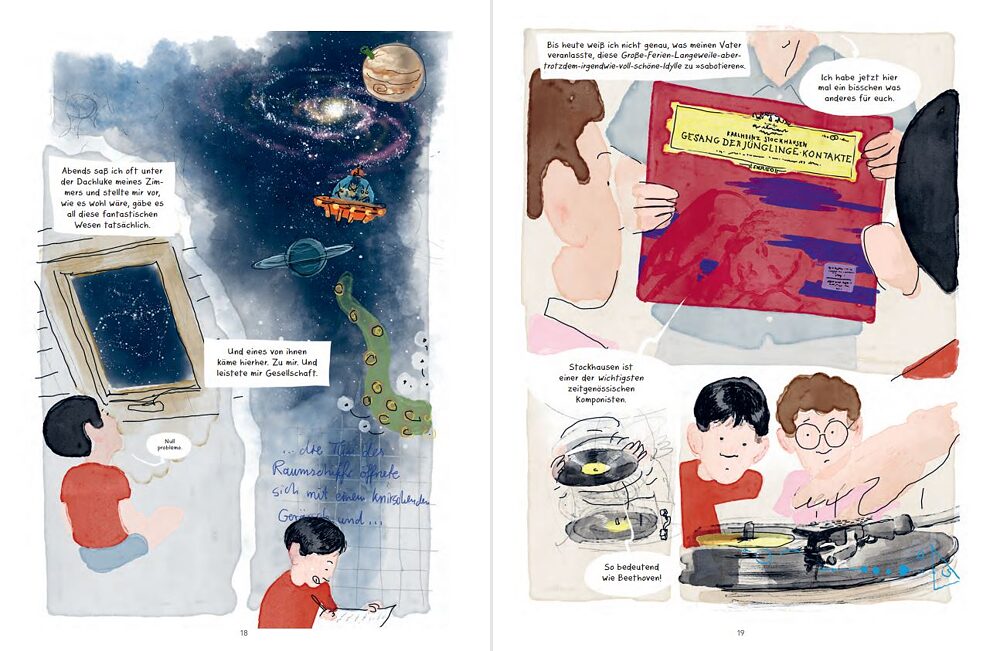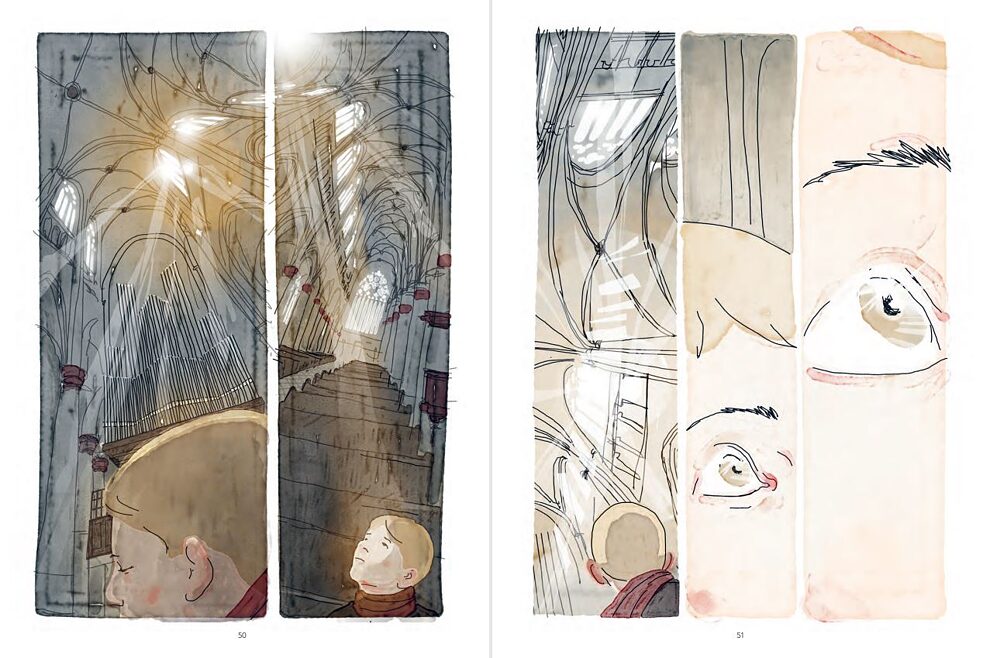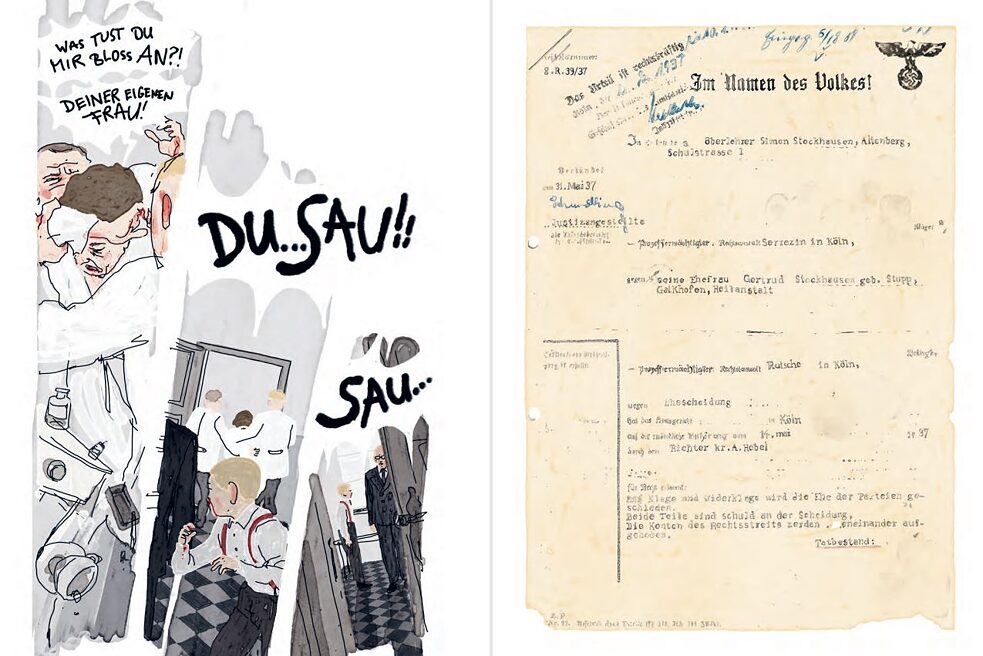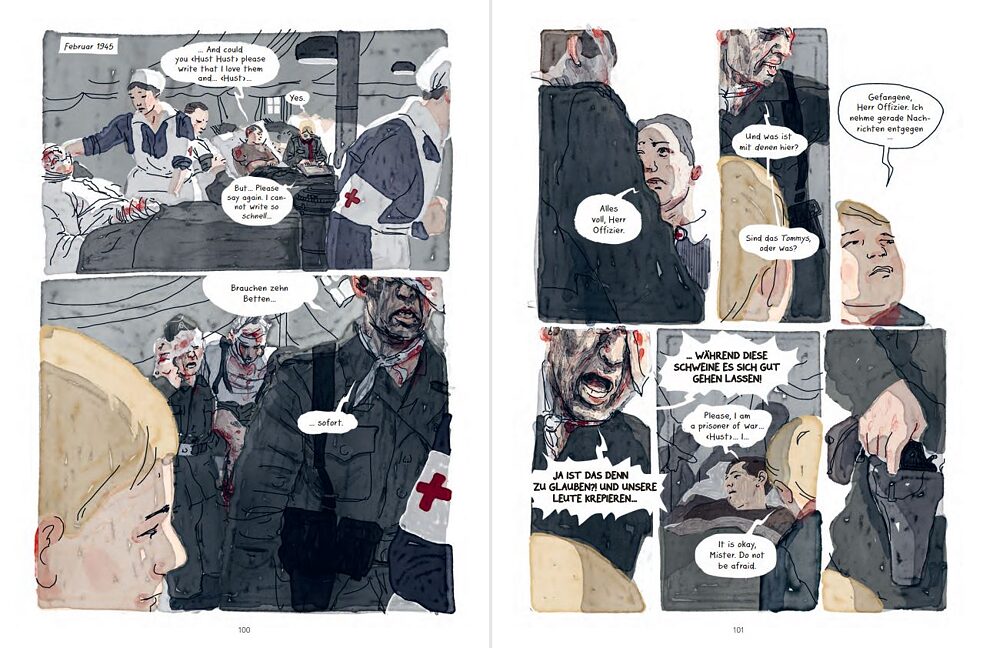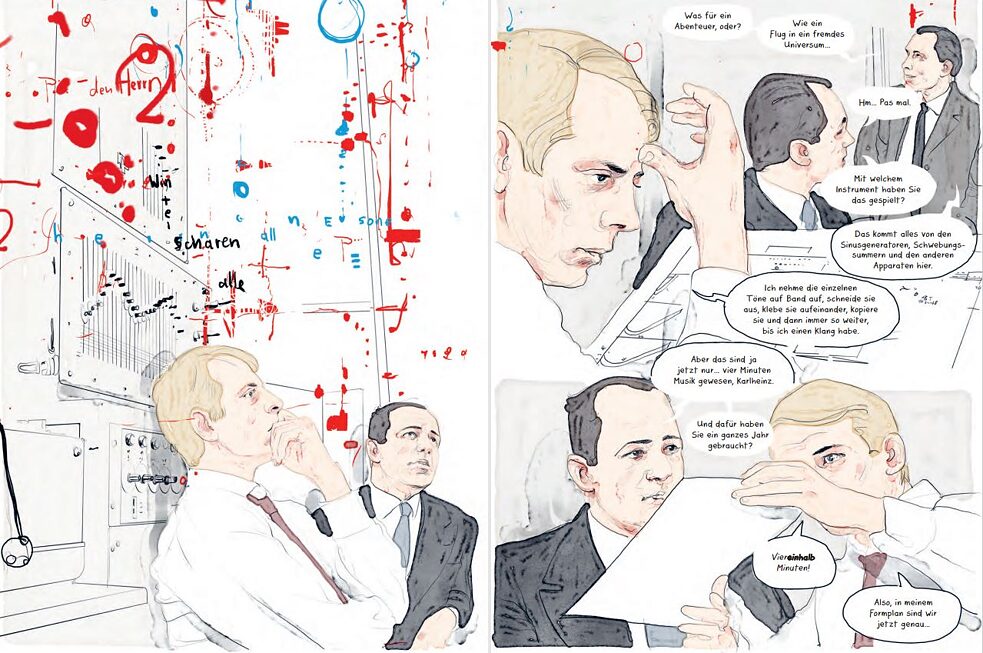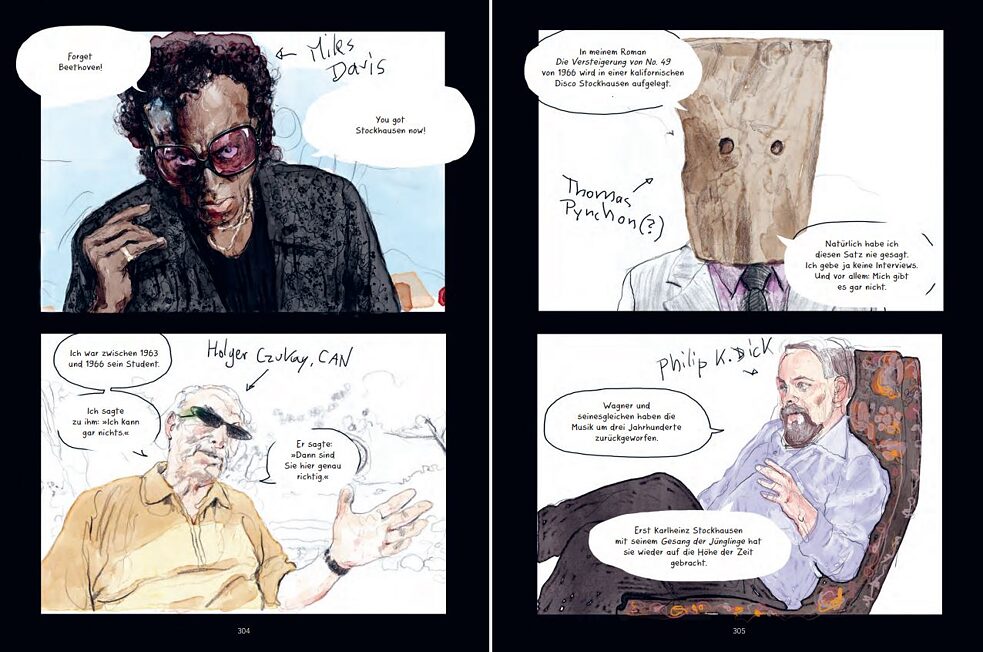Thomas von Steinaecker / David von Bassewitz
Karlheinz Superstar
In a graphic novel, the composer and pioneer of electronic music Karlheinz Stockhausen seems like a being from another world to a small-town boy.
By Holger Moos
Writer Thomas von Steinaecker grew up in the Bavarian town of Oberviechtach in the Upper Palatinate administrative district. In 1989, the summer holidays dragged on forever. Being an altar boy was one of the few diversions of the endless summer.
Twelve-year-old Thomas and his brother looked forward to any change in the routine. One day, their father gave them a record of Karlheinz Stockhausen’s Gesang der Jünglinge. At first, the boys laughed themselves silly, but after listening to the record over and over again, they began to enjoy the really strange music. So much that they wanted to hear more.
Stockhausen’s pieces were “like tickets to another planet,” his life story seemed like a “superhero story” to Steinaecker, so writing his story like a comic book makes sense. The writer Thomas von Steinaecker therefore teamed up with the illustrator David von Bassewitz to create the graphic novel Stockhausen. The subtitle, The Man Who Came from Sirius, evokes Superman from the distant planet of Krypton. In an NDR Kultur interview, Steinaecker describes the composer as “an almost superhuman or messianic figure”. The writer was interested in how someone who came from a very rural area in the Bergisches Land became a “star man” at the end of his life, claiming that he came from Sirius.
Booed and idolised
In the graphic novel, young Thomas reads Stockhausen’s biography under the covers at night. This introduces readers the Stockhausen’s life story, who was born in 1928 and died in 2007, whose various life phases are excellently portrayed both narratively and graphically: growing up during Nazi rule, the tragic death of his mother, who was diagnosed with depression and murdered in the Hadamar killing centre as part of the Nazi euthanasia policy. His father died on the Eastern Front in 1944, and Stockhausen experienced barbarousness when he was called up to work in a field hospital.After the end of the Second World War, the graphic novel presents his musical beginnings: The boos at his performances, a musician screaming: “I... can’t play that!!!” Later he would be idolised world over by people like Miles Davis, the Beatles, Max Ernst and Thomas Pynchon. The novel is interwoven with episodes from Steinaecker’s own youthful infatuation, which later led to a friendship with an admired composer.
Powerfull pull
“A powerful pull emanates from this book,” Fritz Göttler begins his review in the Süddeutschen Zeitung. Stockhausen is indeed an event, of course “also thanks to the drawings made by David von Bassewitz on the computer,” as Christoph Haas points out in the taz. Just as Stockhausen broke the framework of the music, the drawings with their “sketchy and watercolour-like looseness” repeatedly break through the frames; in some cases, Bassewitz eliminates framed panels altogether.The grandiose graphic novel ends again in 1989, when young Steinaecker’s father surprised him by letting him go to a concert and meet Stockhausen in person. The story of Stockhausen and Steinaecker will be continued; a second volume is announced with the word “Intense emotions! Shocking drama! A journey to the limits of music!” Readers can only hope that it will come out soon, but will have to be patient. Steinaecker and Bassewitz worked for seven years on the first volume but hope to complete the second, final volume in four years.
Thomas von Steinaecker / David von Bassewitz: Stockhausen: Der Mann, der vom Sirius kam
Hamburg: Carlsen, 2022. 392 p.
ISBN: 978-3-551-73366-5

